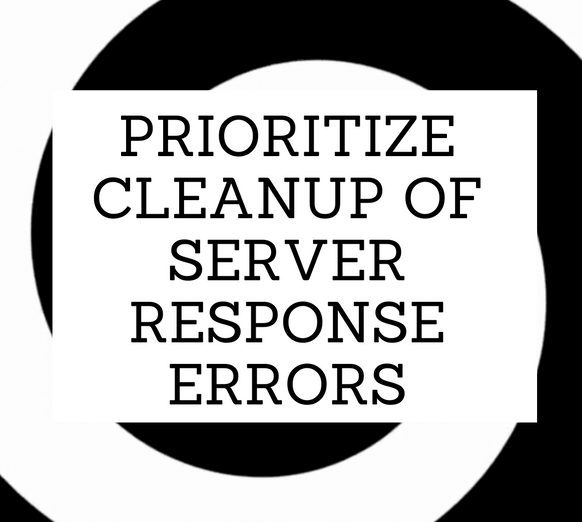 Cleaning up 400 level, 500 level server errors, and weird redirects seems like a battle with no end, especially on larger sites. It sometimes feels like playing wack-a-mole trying to clean them up – as soon as you clean a bunch up, more appear.
Cleaning up 400 level, 500 level server errors, and weird redirects seems like a battle with no end, especially on larger sites. It sometimes feels like playing wack-a-mole trying to clean them up – as soon as you clean a bunch up, more appear.
It’s also really easy to lose your valuable SEO time as well as developer time, cleaning this stuff up. Here are some tips to help you maximize value from your routine SEO cleanup work, without spinning your wheels.
To help prioritizing regular SEO clean up, especially if you’re strapped for development resources, here are some guiding thoughts:
- Focus on the biggest wins
- For other issues, add them to a routine maintenance list to be cleaned up at some point
- Know what to ignore
Focusing On The Biggest Wins First:
1 – Fix pages that have traffic or once had organic traffic before they were 4**/5* server response
Take your top landing pages report from Analytics and crawl all the URLs in there, if your site is small to mid-size, and if any of those pages are not returning 200 server response, fix these first.
2- Pages that do not have traffic but have backlinks and are returning 4**/5** server response
Grab your pages that have backlinks and crawl those pages. If any of your pages that have backlinks return a 400 level or 500 level server response, return them back to a 200 server response or 301 redirect them to a similar page.
If no similar page exists, inspect the backlinks and see if you can reach out to the publisher and suggest another piece of content they may be interested in linking to. Unfortunately, if you redirect the page to a new page that is not sufficiently similar, it is possible that you may lose SEO value that the original page once provided.
3 – Pages that have SEO value but Google is not seeing
Filter your site crawl by canonical URL, make sure all those pages are returning a 200 server response. If you canonicalized pages are not returning a 200 server response, inspect them.
If the canonicalization is correct and the page is returning a non-200 server response, this is a page that should be fixed. If you’re not currently using rel=”canonical” on your website, you can crawl your sitemap as well, if that accurately reflects your site architecture and includes all your key pages.
Routine Maintenance
Cleaning up ‘weird stuff’ that Google is continuously finding month after month
These errors are usually generated from peramertized URLs that return server errors month after month, weird extensions, soft 404s, content that has been moved but not worth redirecting, among many other things.
These issues sometimes require time to investigate the root cause and sometimes are not the easiest fixes. The key factor around these is to determine if
- these are continuously recurring errors or one time errors
- these errors affect a large number of pages
If the errors you’re seeing have the two features above, they warrant further investigation, if not they go in the next bucket.
What to ignore
Sometimes an error is just an error – shedding old pages is a natural part of the web. If a page never had traffic, does not have backlinks, is not part of your core site architecture, and the issue is not continuously generating errors, you can probably safely ignore it.
In conclusion, fix the big issues affecting the pages you care about, schedule the smaller stuff as routine fixes, and ignore the rest. If you’re looking to try out some of the ideas in this post, check out our free crawler to get started.
The post HOW TO: Prioritize Cleanup of Server Response Errors for the Most Value & the Least Effort appeared first on Internet Marketing Ninjas Blog.
